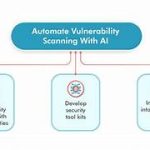AI for Developing Advanced Ransomware Defense Mechanisms
In the digital age, ransomware has emerged as one of the most pervasive and destructive cyber threats. Organizations across industries, from healthcare to finance, have fallen victim to ransomware attacks, where malicious actors encrypt critical data and demand payment in exchange for its release. The financial and reputational damage caused by such attacks has pushed cybersecurity experts to explore innovative solutions. Among these, artificial intelligence (AI) is proving to be a game-changer in developing advanced ransomware defense mechanisms.
This article delves into how AI is transforming ransomware defense, its benefits, applications, challenges, and the future of AI-driven solutions.
Understanding Ransomware and Its Challenges
Ransomware is a type of malware designed to block access to a computer system or data by encrypting it. The attackers then demand a ransom to restore access. Modern ransomware attacks are highly sophisticated, often employing techniques like:
- Polymorphism: Changing the code to evade detection.
- Fileless execution: Running entirely in memory to bypass traditional file-based defenses.
- Double extortion: Threatening to leak sensitive data if the ransom is not paid.
Traditional defense mechanisms, such as signature-based antivirus software and rule-based intrusion detection systems, struggle to keep up with the evolving nature of ransomware. These methods often fail to detect zero-day threats or new strains of malware that do not match known signatures.
How AI Enhances Ransomware Defense
AI has introduced a paradigm shift in ransomware defense by enabling systems to learn, adapt, and respond to threats dynamically. Unlike traditional methods, AI-driven solutions focus on behavior analysis and predictive analytics, making them more effective in detecting and mitigating ransomware attacks.
1. Behavior-Based Detection
AI monitors the behavior of files, applications, and processes in real time. Any unusual activity, such as a process encrypting large volumes of data or altering system files, triggers an alert.
2. Predictive Analytics
Machine learning algorithms analyze historical data to identify patterns and predict potential ransomware threats. This proactive approach helps in mitigating risks before an attack occurs.
3. Real-Time Threat Hunting
AI enables automated threat hunting by continuously scanning networks, endpoints, and servers for indicators of compromise (IoCs). This ensures rapid detection and response to threats.
4. Automated Incident Response
AI-powered systems can take immediate actions, such as isolating infected machines, rolling back encrypted files, or shutting down malicious processes, to prevent further damage.
5. Adaptive Learning
Through continuous learning, AI models adapt to new ransomware variants, ensuring that defenses remain effective against evolving threats.
Key Components of AI-Powered Ransomware Defense
AI-driven ransomware defense mechanisms are built on several critical components:
1. Data Collection and Preprocessing
AI systems collect vast amounts of data from various sources, including:
- Network traffic logs.
- Endpoint activity.
- Threat intelligence feeds.
This data is preprocessed to remove noise and extract meaningful insights.
2. Machine Learning Models
AI leverages supervised, unsupervised, and reinforcement learning models:
- Supervised Learning: Trains on labeled datasets to recognize known ransomware behaviors.
- Unsupervised Learning: Detects anomalies without prior knowledge of what constitutes a threat.
- Reinforcement Learning: Continuously improves defense strategies based on feedback from previous encounters.
3. Neural Networks
Deep learning techniques, such as convolutional and recurrent neural networks, process complex datasets to identify hidden patterns indicative of ransomware activity.
4. Integration with Security Tools
AI models integrate with tools like firewalls, intrusion detection systems (IDS), and endpoint detection and response (EDR) platforms to provide a unified defense strategy.
Applications of AI in Ransomware Defense
AI-powered ransomware defense mechanisms are being applied in various domains to enhance security:
1. Endpoint Protection
AI secures individual devices by monitoring processes and detecting unauthorized encryption attempts. Advanced endpoint protection platforms (EPPs) utilize AI to stop ransomware at its source.
2. Network Security
AI analyzes network traffic for unusual patterns, such as unexpected file transfers or communication with known malicious domains, to block ransomware propagation.
3. Email Filtering
Phishing emails are a common delivery method for ransomware. AI systems analyze email content, sender reputation, and attachments to identify and block malicious emails.
4. Data Recovery
AI assists in automated data recovery by identifying clean backup versions and ensuring minimal disruption during a ransomware attack.
5. Threat Intelligence
AI aggregates and analyzes threat intelligence data to provide insights into emerging ransomware trends, helping organizations stay ahead of attackers.
Benefits of AI-Driven Ransomware Defense
AI offers several advantages in the fight against ransomware:
1. Enhanced Detection Rates
AI detects both known and unknown ransomware variants by analyzing behavior rather than relying on signatures.
2. Faster Response Times
Real-time monitoring and automated response capabilities minimize the time between detection and mitigation.
3. Reduced False Positives
AI models refine their analysis over time, reducing false alarms and ensuring that legitimate activities are not disrupted.
4. Scalability
AI solutions can handle large-scale environments, making them suitable for enterprises with extensive digital infrastructures.
5. Cost Efficiency
By automating threat detection and response, AI reduces the need for manual intervention, saving time and resources.
Challenges in Implementing AI for Ransomware Defense
Despite its potential, AI-driven ransomware defense faces several challenges:
1. Data Dependency
AI models require large, high-quality datasets for training. Insufficient or biased data can impact their effectiveness.
2. Adversarial Attacks
Cybercriminals can exploit vulnerabilities in AI models, feeding them misleading data to bypass detection.
3. Resource Intensity
AI systems demand significant computational resources for training and deployment, which can strain organizational budgets.
4. Integration Complexity
Implementing AI-driven solutions alongside existing security tools may require significant technical expertise.
5. Privacy Concerns
Monitoring network and endpoint activity raises concerns about user privacy and data security.
Future of AI in Ransomware Defense
The future of AI-driven ransomware defense is marked by several promising developments:
1. Federated Learning
This technique trains AI models on decentralized data, enhancing their effectiveness while preserving privacy.
2. Explainable AI (XAI)
Explainable AI aims to make AI decision-making transparent, helping security teams understand why certain actions were taken.
3. Integration with Blockchain
Combining AI with blockchain technology could enhance data integrity and prevent tampering during ransomware recovery.
4. AI-Powered Decryption
AI algorithms may eventually assist in developing tools to decrypt ransomware-encrypted files without paying the ransom.
5. Collaboration and Sharing
Organizations may increasingly adopt AI-powered platforms to share threat intelligence, creating a collective defense against ransomware.
Conclusion
AI has emerged as a powerful ally in the battle against ransomware, providing real-time detection, predictive analytics, and automated response capabilities. By leveraging advanced machine learning models and integrating them with existing security infrastructures, organizations can stay one step ahead of malicious actors.
While challenges remain, ongoing advancements in AI and cybersecurity promise to overcome these hurdles, paving the way for a more secure digital landscape. As ransomware continues to evolve, so too must our defenses—and AI is poised to lead the charge.


